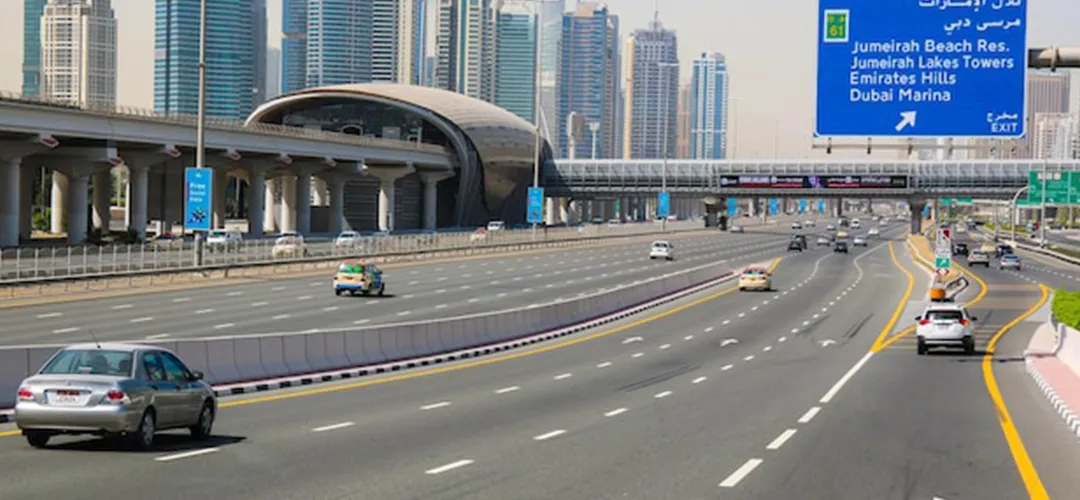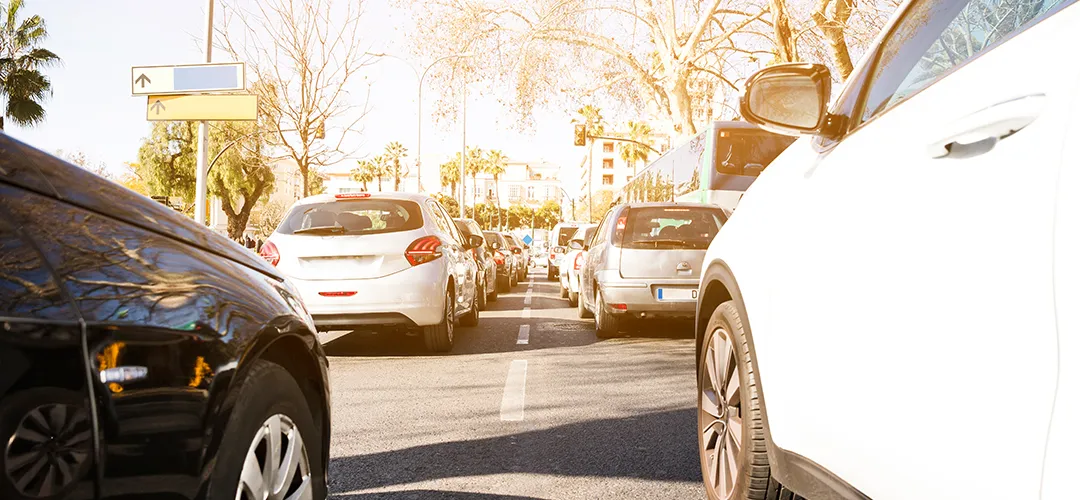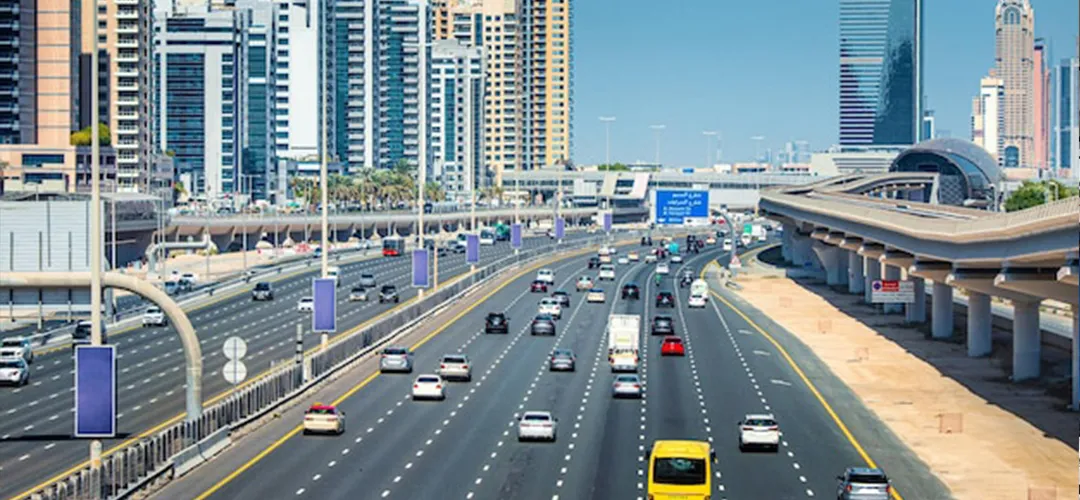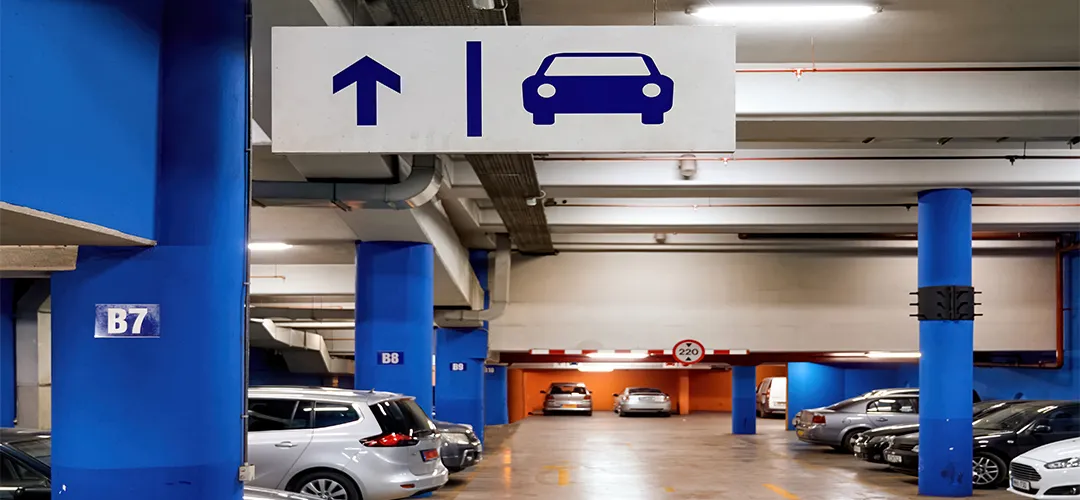
Driving in UAE offers thrilling opportunities which demand strict adherence to traffic rulebooks. Moreover, knowing the driving rules in UAE is mandatory for both residents and visitors to prevent fines and maintain road safety. This guide presents necessary driving advice with guidelines for what to do as well as what not to do and essential tips along with parking instructions and frequently asked questions to ensure safe navigation of UAE roads.
Understanding the Driving Rules in UAE

A driver in the UAE must follow road laws while maintaining proper lane position and respecting set speed limits. Here are some important rules to follow:
- Always carry your driving documents: You must always carry your driving license together with your car registration documents along with your insurance information.
- Follow the speed limits: Speed violations in the UAE lead to severe penalties because the country maintains strict speed rules. Road monitoring is performed by speed cameras for the purpose of checking compliance.
- Use seat belts: Every person inside the vehicle must keep their seat belt fastened during the entire journey.
- Respect traffic signals: Running through a red traffic signal constitutes a grave traffic violation that leads to severe penalties up to driving license suspension.
- Stay in your lane: Driving hastily between lanes leads to dangerous accidents on the road. Before making any lane changes you must signal while also performing mirror checks.
The Dos of Driving in UAE

To ensure a smooth as well as safe driving experience, it has been suggested that must follow these essential tips:
1. Give Way to Emergency Vehicles
Drivers must yield their position to all emergency vehicles including ambulances and police cars and fire trucks. Failure to provide passage for emergency vehicles will result in monetary penalties together with possible legal consequences.
2. Use Indicators While Changing Lanes
Turn signals should be activated before you switch lanes or execute any turning maneuver. The system helps create clear conditions that prevent mix-ups between drivers as well as safety hazards.
3. Maintain a Safe Distance
In the UAE tailgating stands as an illegal practice that produces numerous motor vehicle accidents. Drive behind the leading vehicle at a safe distance to receive enough time for reaction. 4. Park in Designated Areas
Driving in an unauthorized parking spot may result in both fines and vehicle removal. Select your parking spot in designated areas while monitoring the use of parking meters.
5. Be Cautious During Sandstorms
Drive slowly during sandstorms while using headlights on low beam and keep a secure distance between your vehicle and others behind you.
The Don’ts of Driving in UAE

While driving in the UAE, evade these common blunders to guarantee obedience with the regulation:
1. Do Not Use Your Phone While Driving
You must use a hands-free system when using a mobile phone behind the wheel except in emergency situations. Fines alongside black points will be issued to drivers who violate the rules.
2. Do Not Drink and Drive
Drinking and driving carries no tolerance in the United Arab Emirates. Any trace of alcohol in your blood will bring about serious penalties which might include monetary fines and jail detention and removal from the country.
3. Do Not Overtake from the Right
Left lane positions are the only acceptable position to execute an overtake. Right-side overtake maneuvers are both dangerous and illegal in the UAE.
4. Do Not Ignore Pedestrian Crossings
You must halt your vehicle whenever pedestrians occupy marked pedestrian crossings. Not respecting this rule will get you both monetary penalties and endanger your life.
5. Do Not Leave the Scene of an Accident
After a car accident you must stay in your location while you call emergency services. The law considers escaping from an accident a criminal offense.
Driving and Parking in UAE

Driving Conditions in UAE
The roads in the UAE are well-maintained; however, overcrowding related to traffic is mainly common in major cities like Dubai as well as Abu Dhabi. Additionally, here are some driving concerns:
- Peak Hours: Expect heavy traffic between 7 AM - 9 AM as well as 5 PM - 8 PM.
- Toll Gates (Salik): Dubai has a toll system which is commonly called Salik. In addition, it automatically withholds fees from registered vehicles when passing through toll gates throughout the UAE.
- Road Signs: Road signs are in Arabic along with English, that making it tranquil for tourists as well as expatriates to navigate.
Parking Rules and Regulations

Parking in the UAE is regulated as well as it varies by location:
- Paid Parking Zones: Many areas require paid parking system. Additionally, Payment can be made via parking meters, SMS, even though mobile applications.
- Residential Parking: Certain housing areas necessitate a parking permit.
- No Parking Zones: Avoid parking near fire hydrants, pedestrian passages, as well as intersections to avoid fines.
- Mall and Public Parking: Shopping malls even though public places offer designated parking, often with free as well as paid options.
Final Thoughts
Thus, following driving rules in UAE stands as a fundamental requirement to ensure safety together with a smooth driving experience. The combination of law adherence and safe driving practices and proper parking protocols will grant you confident mobility on UAE roads. Residents and tourists in the UAE who stay informed about driving rules will prevent fines while maintaining road safety.
Have you ever driven on roads throughout the UAE? Please express your insights through comments at the end of this post.
FAQs on Driving in UAE
1. What is the minimum driving age in UAE?
UAE citizens must be eighteen to operate private cars and twenty-one to drive commercial vehicles.
2. Can tourists drive in UAE?
International driving permits together with original driving licenses from tourists' home countries enable them to operate vehicles in the UAE.
3. What should I do if I get a traffic fine?
Online traffic fines management is accessible through Dubai Police and RTA as well as Abu Dhabi Police websites.
4. Are there speed cameras on all roads?
Highways and city roads throughout the UAE are equipped with speed cameras for traffic violation monitoring.
5. What happens if I leave my car parked illegally?
The authorities will issue fines and remove the vehicle if you leave it in a restricted parking zone. You must use designated parking spaces to prevent getting fines.

